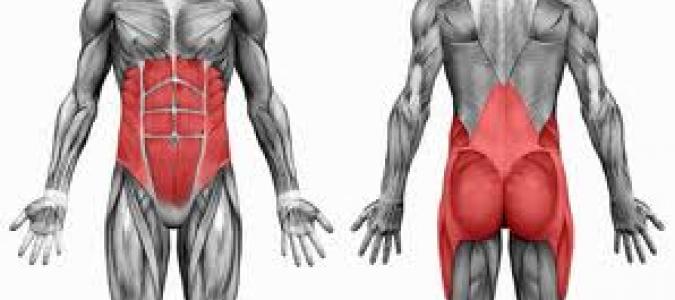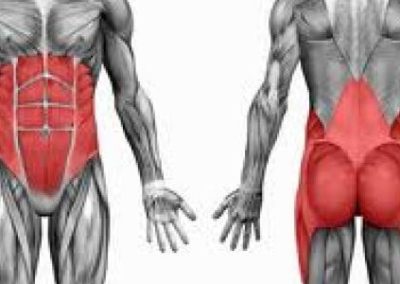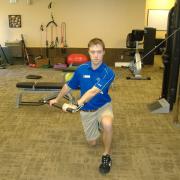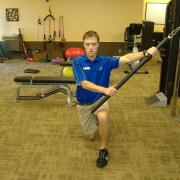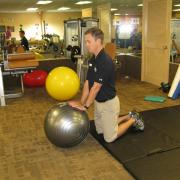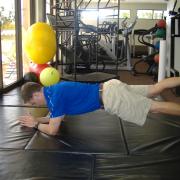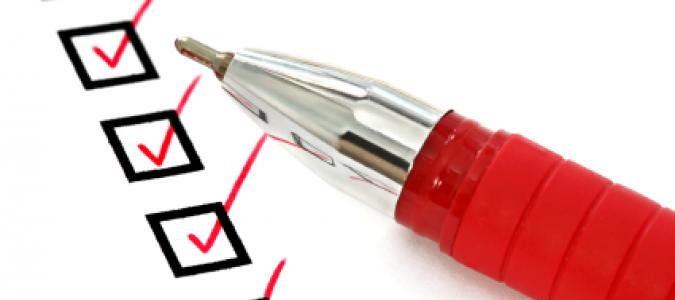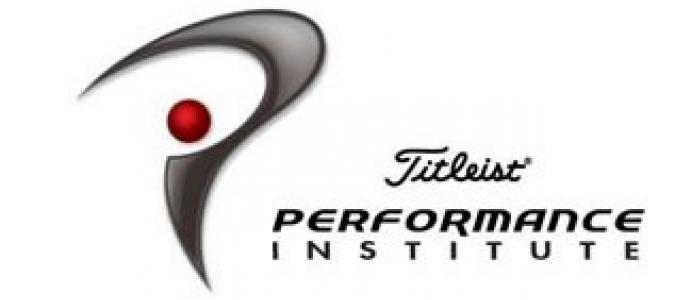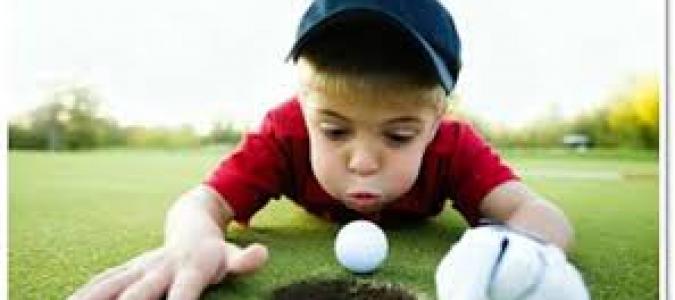Junior Golf Training In Palm Beach Gardens
Here is a guide for junior golfers and what parents should know. I am often asked the question; at what age should my child begin working out for golf? The answer to this question is not as cut and dry as one might think. Most of us know children mature at different rates. What most of us do not know is that every child has an optimal time or “window of opportunity” for developing the various physical qualities that will propel them towards high levels of athletic achievement. These periods of physiological development are known as “sensitive periods”. These periods occur when a child’s potential for physical adaptation to specific sports training stimulus is greatest. Each child’s “sensitive period” is different particularly when comparing males to females. For example, the rate of strength development for girls occurs earlier than boys due to the onset of puberty at a younger age. This difference in the developmental stage indicates that girls are more likely to benefit from strength training at an earlier age than boys. If the child does not engage in sports or physical activities during these periods, the result will be a permanent loss of fitness and athletic potential.
Common Mistakes Made By Coaches And Parents
Coaches often make the mistake of training children between the ages of 10 and 16 based on their chronological age rather than their developmental age. Research has shown that chronological age is not a good indicator to begin athletic development training programs for young golfers. There is too much variation in the physical, cognitive and emotional maturation of athletes within this age group. Taking a physical training program and scaling it down for a junior is not a great alternative…kids are not mini adults and should not be trained like them. The best way to determine a child’s developmental age is to identify their Peak Height Velocity (PHV) or their growth spurt. This typically occurs between the ages of 12-14 in both girls and boys. At this time their ability to adapt to the physical stressors demanded of them is heightened and results can come quickly, ultimately dictating their future in athletics. This optimal window of accelerated adaptation will include improvements in stamina (endurance), strength, speed, skill, and suppleness (flexibility).
A mistake parents make, is that they have their child specialize in golf (or other sports) at too early an age. If the child is only playing one sport during their developmental years (5 – 12) their “physical literacy” (a term coined by the Titleist Performance Institute) will never have a chance to progress. Physical literacy means the development of fundamental movement skills (FMS) and fundamental sport skills (FSS). This should allow a child to engage in a wide variety of physical activities with confidence and efficiency before the onset of the growth spurt. It is widely written that the best golfers and athletes were multi-sport competitors whose natural athleticism was cultivated before their sport specific skills. Some of the best athletes and golfers in the world played other sports during their college and professional careers. Below is a list of some of the best golfers on tour and retired who played multiple sports well into high school and college:
Gary Woodland: College Basketball
Dustin Johnson: High School Basketball
Hale Irwin: College Football
Martin Kaymer: Professional Soccer
Sergio Garcia: Amateur Tennis
Matt Kuchar: Amateur Tennis
Jerry Kelly: College Hockey
John Brodie: Professional Football
Johnattan Vegas: Baseball
Ricky Barnes: High School Football and Baseball
Rickie Fowler: Motorcross
Sam Snead: High School Football and Track
Fred Funk: Golden Gloves Boxing
Stuart Appleby: Rugby
Jack Nicklaus: High School Basketball and Football
Tiger Woods: All around athlete
Long-Term Athletic Development (LTAD)
This term and most of the research done on this topic was brought to attention by Istvan Balyi, a doctor from the National Coaching Institute in British Columbia, Canada. He has concluded, through intensive study and research, that long-term commitment to practice and training is required to produce elite players in all sports. “Ultimately, sustained success comes from training and performing well over the long-term rather than winning in the short-term.” By applying well thought out training programs and devoting the appropriate amount of time to competition and practice during a child’s peak years of development, the coach or parent will ensure optimum development throughout the athlete’s career. LTAD is defined by its five-stage model. Each stage details how to enhance the appropriate physical development of a child from the age of 5 through college.
FUNdamentals: Males 6-9/Females 6-8 years of age
Learning to Train: Males 9-12/Females 8-11 years of age
Training to Train: Males 12-16/ Females 11-15 years of age
Training to Compete: Males 16-18/ Females 15-17 years of age
Training to Win: Males 18 and older/ Females 17 years and older
Stage 1 – FUNdamentals (Males 6-9; Females 6-8)
It is during this stage of development that children should learn and master Fundamental Movement Skills (FMS). The foundation for future athletic prowess is established during these years. The focus should be on building basic motor skills like running, jumping, skipping, throwing, kicking, balance, coordination, speed, and agility. These are all skills that should naturally develop through play. Unfortunately, in an age where technology is so advanced, it is more appealing now for a child to sit around and play video games and watch TV instead of going outside to climb trees, play on jungle gyms, and throw and kick balls.
At this stage participation in as many different sports (3-4 is ideal) as possible is of key importance. Speed, power and endurance are developed through the design of FUN games that are competitive and keep the kids interested. Proper techniques on throwing, running, and kicking can be taught to ensure correct form is cultivated and carried over to the next stage of development. It is during this time that the first “window of opportunity for accelerated adaptation” occurs for speed development in boys and girls. Exercise programs should focus on challenging the child to run as hard as he/she can, change direction as quickly as possible and as related to golf, swing a lightly weighted instrument with speed and velocity. Acquiring the basic motor skills during this stage will have a strong carryover to the development of their Fundamental Sports Skills (FSS) during the next stage.
Stage 2 – Learning To Train (Males 9-12; Females 8-11)
This is arguably the most important and pivotal stage to the development of the young golfer. It is during this time that children are physiologically ready to obtain the general overall sport skills required for athletic development. In the prepubescent athlete, all athletic qualities correlate highly with one another .This means that gains in one physical attribute – speed for instance- will also result in gains in flexibility, endurance and coordination. The “window of opportunity” stressed here is motor learning and coordination. This is when our young golfer will begin to learn the grip, backswing, follow-thru, weight shift, and set up. All of this is achieved by creating fun and challenging games for the child as this is still the optimal learning environment. Stretching and body weight exercises are also introduced in conjunction with the FMS learned in the previous stage.
Stage 3 – Training To Train (Males 12-16; Females 11-15)
This training phase is usually categorized by the onset of Peak Height Velocity or the major growth spurt. This is the ideal time for strength and aerobic training since the hormonal changes occurring in the adolescent body promote an improved ability of the body to repair itself, increase strength, increase muscle mass, and increase endurance. The introduction of strength and aerobic training with emphasis on body weight training and cardiovascular conditioning will not replace the skill, speed, and flexibility training that preceded it. In fact, it is equally important for golfers to maintain flexibility levels during growth spurts since the bones and ligaments tend to outgrow the muscles creating tightness throughout. Junior golfers spend too much time competing at this age and not taking advantage of the “window of opportunity” for developing the two “sensitive” periods of development. Missing this critical time will negatively influence their athletic development and could cause a plateau during the latter stages of their careers.
Stage 4 – Training To Compete (Males 16-18; Females 15-17)
By this time, athletes should have optimized their physical preparation by competing in numerous sports, practicing technical skills, and improving their fitness levels. It is now time to become more sport specific in practice and competition. Devoting time to one sport more than others is accepted and the practice to competition ratio should be approximately 50/50. Fitness training now becomes more specific to the sport and individually tailored to the golfers physical restriction and limitations.
Stage 5 – Training To Win (Males 18 And Older; Females 17 And Older)
The final phase of athletic preparation should focus on maximizing performance in all facets. The golfer should be devoting attention to all physical modes of improvement by training to peak for the major competitions and events. As golfers tend to play year round at this stage of development, creating periodization programs may not be as realistic as it would with a football player who has a set established season. Because of this, training activities will be reduced putting a special emphasis on maintenance of physical qualities while competing more frequently. The golfer should be training but with less volume and focusing on maintaining flexibility, strength and power levels without creating soreness that may impact performance in a negative way.
TABLE OF DEVELOPMENT
